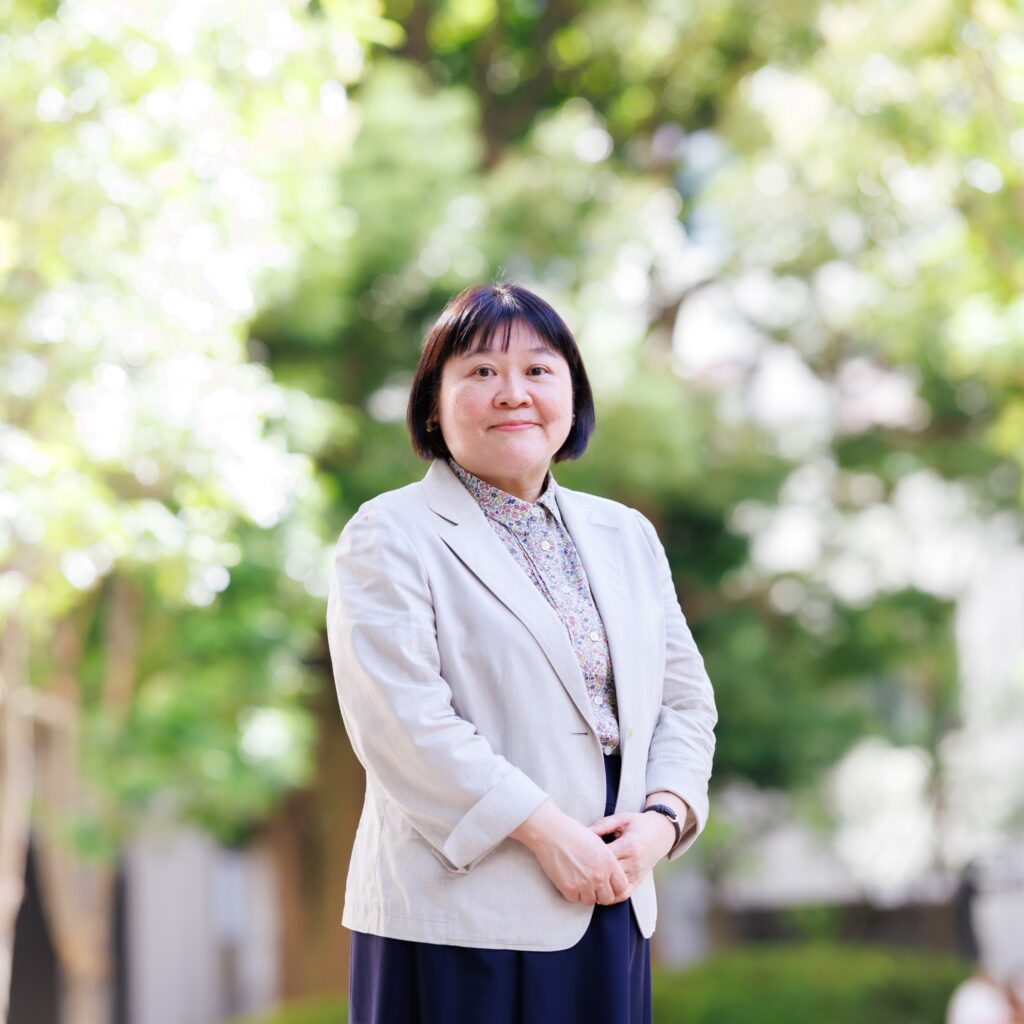
Associate Professor Akiko Masaki of the Center for Language Education and Research specializes in researching the phonetics of German. She researches speech sounds that prove challenging for Japanese learners of German to both produce and understand. How precisely does the German language differ from the Japanese language phonetically in terms of such aspects as sound deletion and assimilation?
I specialize in the phonetics of the German language. Phonetics is the field of linguistics that investigates how people produce sounds, how they are articulated, and how they are then understood. My research focuses on words and sounds that are challenging for Japanese learners of German to produce and comprehend, as well as the pronunciation peculiarities of the Japanese language.
One of the most difficult sounds to generate in German is the R, which is produced through an uvular fricative. Two other sounds that learners struggle with are the ü and ö umlauts, which are produced through rounded or pursed lips. “ü” is sounded like ‘ee’ with the lips pursed, while “ö” is similar to ‘eh’ with the lips rounded.
There are very few sounds in Japanese that are produced through rounded lips, so unless a student consciously practices the sound cannot be mastered. Moreover, even in conversation, Japanese speakers have the habit of adding a vowel after each consonant, which presents a further obstacle to producing a natural-sounding German.
German pronunciation is difficult for Japanese students as regards such aspects as sound deletion and assimilation

German speakers tend to delete sounds in the unaccented syllables of words or sentences, or run them together, that is, assimilate them, where one sound affects those around it. There are speech sounds that are written, but not pronounced in actual speech. The [ə]-sound, the “schwa” sound, is one of those that is often deleted.
Moras in Japanese are vowels, or combinations of a consonant and a vowel, meaning that very little sound deletion occurs. When Japanese students who are not well-versed in German hear the language, they often find it hard to distinguish where one word ends and the other begins, leaving them unable to understand what is being said. My research on these points of difficulty for Japanese learners may provide new straight-forward teaching and study methods for Japanese students of German.
Phonetics research is capable of generating data and results which aid our understanding
Research is done through experiments and studies. For example, a study may observe the mistakes Japanese learners make when transcribing the speech of native speakers, or a study might focus on native speaker evaluations of pronunciation improvements in learners who have studied with a particular CALL-teaching material.
By inputting voices into Praat, a software tool for sound analysis, a researcher can measure the length and frequency of speech sounds through the displayed waveforms and spectrograms, which also requires a basic understanding of physics. Thus, phonetics research differs from literature or other linguistic fields, allowing the discovery of new results from the objective data collected.
Learning German grammar may seem difficult because of the gender and case of nouns and the complexity of articles and verb inflections, but the fact is it is also a language with a solid structure. Thus, once the basic rules are internalized, I believe that it is an easy language to understand. However, that alone is not enough when learning German. If students do not also master speaking and listening skills, they will simply not be able to communicate intelligibly.
It is vital to be able to properly comprehend the German being spoken naturally on a day-to-day basis in the German-speaking countries, and, equally, to be understandable to German speakers in those settings. What do we need to keep in mind then? What should we focus on in our own pronunciation practice in order to produce natural German speech sounds? What rules make it easier to understand speech sounds? These fundamental questions guide my research and inform my teaching practice.
The book I recommend
“Oto to Kotoba no Fushigi na Sekai – Meidogoe kara Eigo no Tatsujin made” (The Strange World of Sounds and Words: From Maid Café Japanese to Masters of English)
by Shigeto Kawahara, Iwanami Shoten

This book starts by examining Japanese vowel sounds, and explains how different speech sounds evoke different images for people, before providing an overview of the various fields in the study of phonetics. This book avoids being overly technical and thus makes phonetics feel accessible to the general reader.
-
Akiko Masaki
- Associate Professor
Center for Language Education and Research
- Associate Professor
-
Graduated from the Department of German Studies, Faculty of Foreign Studies, at Sophia University. Withdrew from the doctoral program in linguistics in Sophia’s Graduate School of Languages and Linguistics after completing the mandatory course. Studied at the Ludwig Maximilian University of Munich in Germany. Appointed to her current position at Sophia University in 2015.
- Center for Language Education and Research
Interviewed: September 2022